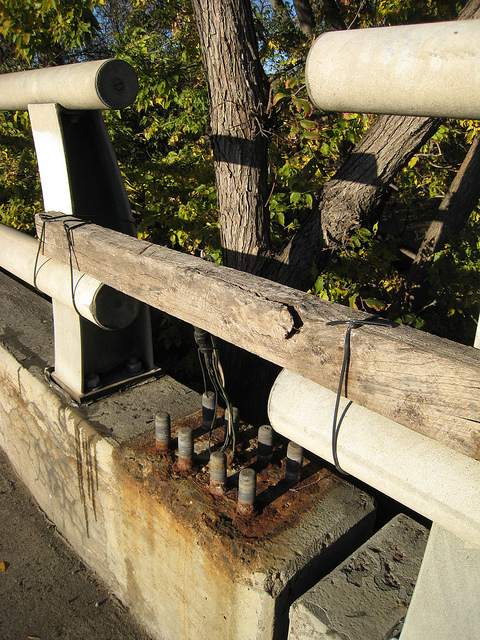Michigan residents are used to infrastructure issues such as potholes and even sinkholes frequently occurring due to Michigan's status as the land of lakes and tempered weather. Lately however, Michiganders are becoming exasperated with dealing with the financial and infrastructural fallout of these destructive holes. In December 2016, a particularly dangerous sinkhole in Fraser, Michigan appeared on 15 Mile Road and Eberlein Street, causing residents to be evacuated from their homes and for part of 15 Mile Road to be closed down.
The sinkhole was caused by a sewer line that is currently being funded and fixed under the Macomb Interceptor Drainage District (MIDD) which is made up of county and city entities including Fraser, Utica, Macomb Township, Clinton county, Harrison County, and Sterling Heights, to name a few. The MIDD tasked Sterling Heights with submitting a share of $22.2 million dollars toward funding repairs. The city of Sterling Heights was outraged with the portion of money that they were tasked to raise and responded with a lawsuit on May 8, 2017, against Macomb County. Sterling Heights claims that the county should be responsible for the repair cost, and not the citizens of the communities affected by the sinkhole.
How The Sinkhole Was Created
As Fraser Public Safety's Lt. Mike Pettyes explains, the main 11-foot-wide sewer line - that lies 55 feet underground - had a break that allowed waste and water to wash out the dirt and sand that supports the structures above ground. Once the supporting layers of dirt were washed out, it caused a gap that allowed for the land above, to sink into the hole in order to fill it in. Also, this isn't the first time a sinkhole has happened in this area. Back in August 2004, a sinkhole grew to be 160-feet long and 60-feet wide appeared as a result of a collapsed sewer line and was closed to the public for 10 months.
Sinkhole Repair Costs And Necessity
Based on current inspections, the sinkhole is expected to cost $75 million dollars to repair, if the pipe doesn’t completely collapse before it is repaired. $70 million of this enormous amount is supposed to be paid by 25-year-old bonds owned by Macomb County and the remaining $5 million is to be covered by state grants. The Michigan Department of Environmental Quality (DEQ) uses the sinkhole as evidence that Michigan’s infrastructure is in need of improvements. This statement is sufficiently supported by The American Society of Civil Engineers (ASCE) who gave Michigan’s infrastructure a D on it’s report card back in 2009. The latest reports show that in 2011, Michigan still wasn’t making the grade with nearly 1,300 of the 11,022 bridges in 'poor' to 'failing' condition, 22% of the major roads in 'poor' condition and 66 of its waste sites being put on the national priorities list.
Sterling Heights Lawsuit Dismissed
The MIDD contracted the Macomb County Wastewater Disposal District (MCWDD) back in 2010 to deal with repairs and upkeep of the sewer line. However, the MCWDD failed to do their job. As a result, the city of Sterling Heights was issued a bill for $22.2 million dollars of the estimated $75 million repair cost. This is a cost that Mayor Michael Taylor of Sterling Heights argues is unfair to his city, its residents, and its businesses to pay for, due to the “breach in contract” on MCWDDs part.
However, Macomb County Circuit Judge Jennifer Faunce didn't think so, which is why she dismissed Sterling Heights' lawsuit in favor of the MIDD's argument that the lawsuit was preventing the sewer line from being fixed. But, this may not be the last time the MIDD will face trouble from Sterling Heights. Mayor Taylor says that he is disappointed by Judge Faunce's decision and is currently reconvening with the city's attorney and the City Council to figure out a solution.
“I’m going to do everything I can to protect our taxpayers,” declared Taylor.
Temporary Fixes
As of May 14, 2017, officials state that an additional $6.2 million in new repairs is needed. In the meantime, a temporary bypass line has been installed to help waste flow around the sinkhole area and allow inspectors to further investigate the damage of the sewer line. So far, east of the sinkhole (upstream) shows signs of deterioration with gushing leaks and fractures. West of the sinkhole (downstream) has been scheduled to be inspected for damages later on this summer and could possibly drive up the cost of the repair bill and the therefore the need for additional bonds to be sold.
Hopefully, while negotiations and repair are underway regarding who will pay for what, the sinkhole doesn't collapse even further or potentially spread and make the situation even worse. In the meantime, drivers should pay attention to where they are driving as sinkholes are a serious matter. Drivers should be careful of streets with noticeable dips or drainage problems which could be a sign of it's failing infrastructure. In addition, while repairs are being made along 15 Mile Road, motorists, pedestrians, and bicyclists should all be wary of construction site accidents. By looking out for construction signs, slowing down car speed at construction sites, and by generally traveling through construction sites more cautiously, people may be able to avoid serious injuries that can arise from construction motor vehicle accidents.
Infrastructure damage and repair has been a growing problem in Michigan for many years, let alone the entire nation. In 2013, the ASCE estimated that the cost of updating the infrastructure in America could cost up to $3.6 trillion dollars by the year 2020. Have you or someone you know sustained injuries in an accident stemming from damaged infrastructure? If so, call 844.4MI.FIRM to speak with an attorney at The Michigan Law Firm, PLLC. Our firm provides free consultations.


